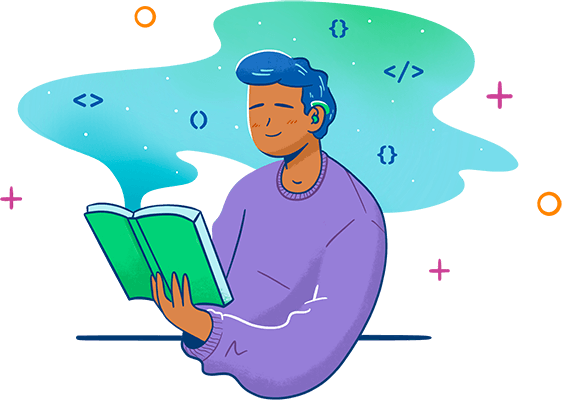Learn Python
Python is a very popular language created in 1991, and is used for web applications, servers, information security, artificial intelligence, data science, mathematics, video games, and even robots. It is commonly used by many Fortune 500 companies and top technology startups. By the end of this track, you’ll have what it takes to begin your career in companies that use Python, or even to start your own company!
-
An entry-level salary for the technologies covered in this track is about $70,000 / yr on average.
-
Some companies that use these technologies regularly include: Google, NASA, Nokia, IBM, Digg, Dropbox, Pinterest, Reddit, Yelp, Apple, and Amazon
Ready to start learning?
Treehouse offers a 7 day free trial for new students. Get access to 1000s of hours of content. Learn to code, land your dream job.
Start Your Free Trial
-
Course
- 1
- 2
- 3
- 4
Python Basics
Learn the building blocks of the wonderful general purpose programming language Python.
-
Course
- 1
- 2
- 3
Introducing Lists
Lists are a powerful data type that allows you to store multiple ordered values in a single container. You are gonna love them.
-
Course
- 1
- 2
- 3
- 4
Object-Oriented Python
Sometimes simple scripts with functions in them just aren't enough. Eventually you'll need logical models of your work and that'll lead you to creating custom classes in Python. Object-oriented programming is a large topic. It provides us some amazing tools, though, so it's one of the most beneficial things to learn about in Python. First, you'll learn how to build basic custom classes. Then, you'll expand them through inheritance. And for some extra power, you'll also learn how to take control of Python's built-in classes to make your own more powerful while doing less work. Finally, we'll put everything together into a fun game utility.
-
Course
- 1
- 2
Write Better Python
We've learned the ins and outs of Python. We're comfortable making all sorts of data types, writing functions, and creating classes. But now we need to look at how our Python code should be formatted so it matches the standard. We'll also look at how to get our code to give us help() and how we can use logging and pdb to help us keep track of what's going on inside the code.
-
Course
- 1
Regular Expressions in Python
Regular expressions are one of the tools that every programmer needs, but is often scared of. In this course, we'll explore the re module that Python provides and learn to write regular expressions for many different situations.
-
Course
- 1
- 2
- 3
Using Databases in Python
When you want to store data from a program, you have two general choices: files or databases. In this course, we're going to explore using a database from within Python by using the excellent ORM Peewee. We'll build a command line diary application that stores our thoughts and notes in a SQLite database, lets us review and delete them, and even has a search feature!
-
Course
- 1
- 2
- 3
Python Testing
Every project can benefit from testing and Python's testing library is solid, strong, and easy to learn and use. In this course, we'll learn about doctests, Python's unittest library, and the super-handy third-party package coverage.py. Come along and learn to assert yourself!
-
Track Completion
This course includes:
- Python Basics 3 hours
- Introducing Lists 105 min
- Object-Oriented Python 3 hours
- Write Better Python 70 min
- Regular Expressions in Python 110 min
- Using Databases in Python 118 min
- Python Testing 77 min